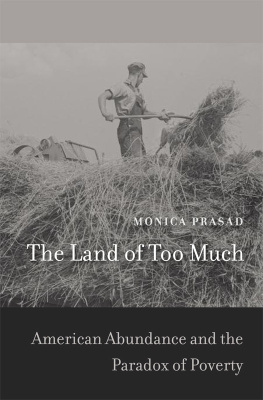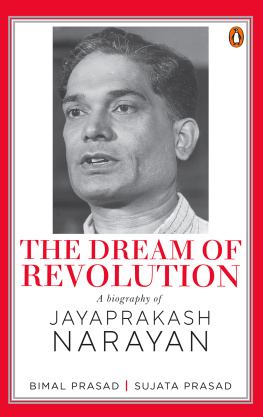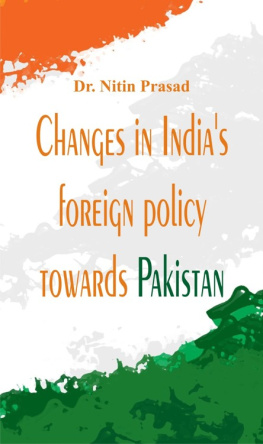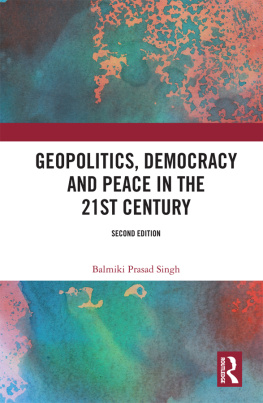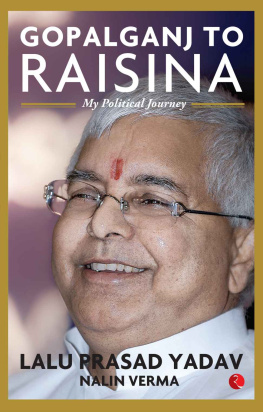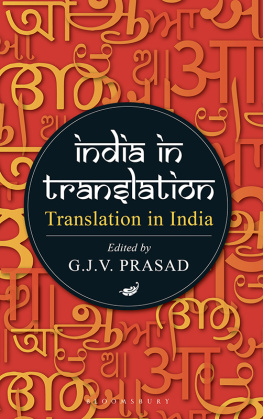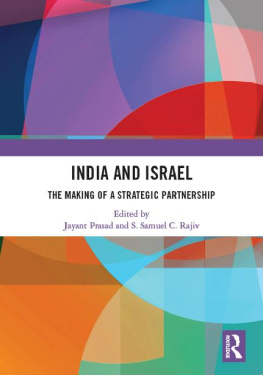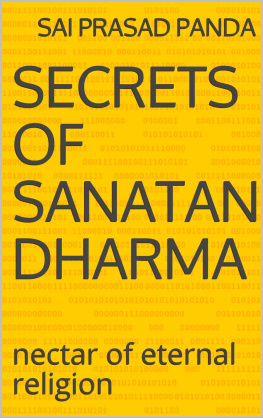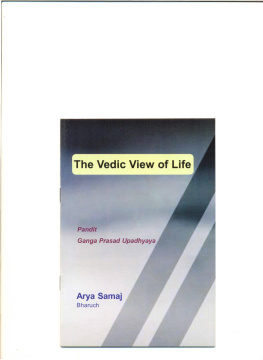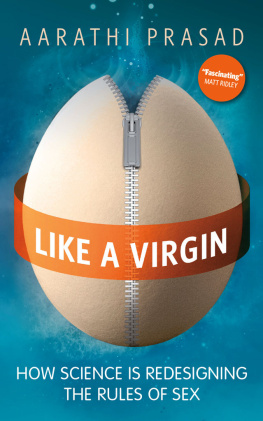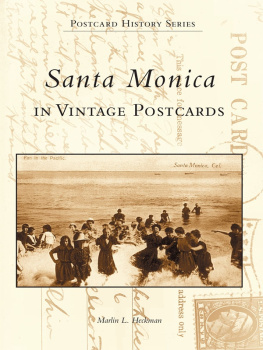Copyright 2012 by the President and Fellows of Harvard College
All rights reserved
Jacket photograph: Ben Shahn, wheat harvest in the field, 1938, Library of Congress.
Jacket design: Annamarie McMahon Why.
The Library of Congress has cataloged the printed edition as follows:
Prasad, Monica.
The land of too much : American abundance and the paradox of poverty / Monica Prasad.
p. cm.
Includes bibliographical references and index.
ISBN 978-0-674-06652-6 (alk. paper)
1. United StatesEconomic policy. 2. United StatesSocial policy. 3. Fiscal policyUnited States. I. Title.
HC103.P843 2012
338.5'2120973dc23 2012010526
Figures
Pre-tax and transfer inequality and post-tax and transfer inequality
Index of industrial production, 18701912
Index of agricultural output, 18691950
Index of manufacturing output, 18691941
Total GDP, 18201924
Wholesale commodity price index, 18481943
U.S. mortgage interest rates, 18691885
Index of agricultural output, 18891929
How to see our wheat
Restrictiveness of banking regulation before 1999
Index of activity in the building industry, 19251929 and 1932
Argument of the book
Tables
The United States compared to other industrialized countries
GDP per capita
Regional voting on sales tax in Congress, November 3 and 4, 1921, Republicans only
Regional preferences for sales tax in Congress, 1932
Regional voting on McFadden Act in House of Representatives, February 4, 1926
The demand for credit, 19802005
The effect of deregulation on credit for different levels of social spending
One of the central questions of comparative political economy is why there is so much more poverty in the United States than in any other developed country. In any way that we can measure poverty, the United States fares worse than other countries, even if we control for factors such as the different racial composition and immigration history of the American population. For almost a century scholars in sociology, political science, and economics have studied this question, and they invariably come to the same conclusion: the United States, they tell us, has more poverty because the American government does not do anything about it. Market inequality is similar in the United States and other countries, and only after the intervention of the state through taxes and transfers do we see a marked divergence in poverty rates. In other words, we know how to solve poverty, or at least to reduce it to European levels, but we decide against doing so. The centuries-long tradition of comparative political economy has produced a range of theories that attempt to explain this situation by pointing to the racial fragmentation of American society, the culture committed to the free market, the weakness of labor, or the political strength of business. These theories disagree on particulars, but they all agree that American political economy is characterized by minimal state intervention or by state intervention that reinforces market differences, that the United States is a liberal or laissez-faire country that distrusts the state and favors the free market.
At the same time, research in the past two decades in history and the historically oriented social sciences has thoroughly dismantled any possibility of believing that the United States is a minimally interventionist state. The interdisciplinary research program termed American political development, for example, has taken apart what William Novak refers to as the tired myth of the weak American state (2008, 754). But if comparative political economy ignores this historically oriented scholarship, it is also true that the historical literature cannot explain why there is more poverty in the United States and why capitalism looks so different in different countries. If the United States is and always has been interventionist, the relevant differences between the countries become harder to explain.
This book is an attempt to make a fresh start in comparative political economy by acknowledging what the historical scholarship has to teach us but using this knowledge to answer the question posed by the comparative literaturewhy are there such differences between the United States and Europe? Why does the American state intervene so heavily in some ways that help workers, consumers, and the poorsuch as consumer regulation and taxationbut not in other wayssuch as a welfare state?
In this book I argue that the United States has greater poverty because a set of progressive interventions backfired. The American state is not less interventionist in general, but rather, American intervention took a different form, one that has been less successful in the fight against poverty. To explain why American intervention took this peculiar form and exactly how it backfired, this book develops a demand-side theory of comparative political economy that focuses on how states structure mass consumption. The argument begins with the observation that the key difference between Europe and the United States from the mid-nineteenth to the mid-twentieth centuries was the explosive economic growth of the United States compared to the economic difficulties of Europe. When American productivity and the size of the American market caused price declines throughout the world, particularly in agricultural products, most European countries responded by closing their borders from the American invasion through protectionism; while Americans also turned to protection, tariff barriers were not enough, because the problem was the productivity of American farmers themselves. Consequently, the United States saw a powerful agrarian movement aimed at reordering the political economy. The nineteenth century populists set down important precedents for this reordering, but the crucial moment in this new economic order was the Great Depression, which at the time many diagnosed as a result of overproduction. The land of too much was a phrase Huey Long coined in the 1920s to name the riddle of how wealth, in the form of an unusually successful harvest, could become catastrophe in the form of plunging prices that left farmers unable to repay their debts. Long, like many others, drew a straight line from those plunging prices to farm foreclosures, from there to bank instability, and from there to the Great Depression. The Depression was not a problem of having too little but of having too much. People are starving, Long said, and yet we have more wheat, corn, meat, milk, cheese, honey and truck in this land than the whole human race in America can consume if everyone were turned loose to eat what it wanted. There is something wrong when people starve for food and shiver for clothes and can not get them because there is too much in the land (Long 1930). Like many others, he settled on the argument that the problem was concentration of wealth into a few hands, which prevented those who were starving and shivering from translating their needs into market demand for the glut of products rotting on American farms. He argued for a fundamental transformation of capitalism, because if we spread our great wealth enough that all are served in the land of too muchthen there would be a transfusion into business, a lift to the forgotten, a hope for our nation (Long 1933d).
Since the 1980s, many observers, including most social scientists, have argued that spread[ing] our great wealth is a distinctly un-American thing to do. But for a century before that, that is precisely what America did, for the reasons that Long gives. The American state was shaped by attempts to respond to problems of abundance while a politically divided Europe struggled to generate economic growth. It turns out that spread[ing] our great wealth is a deep-rooted American tradition.

